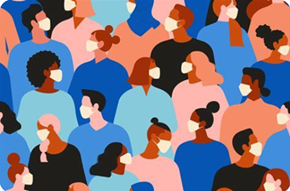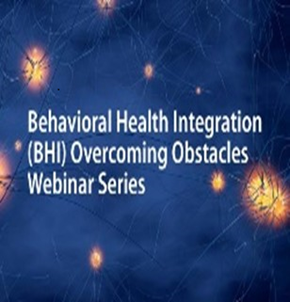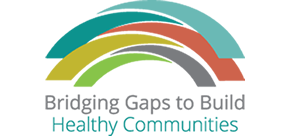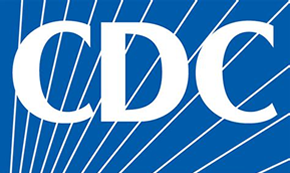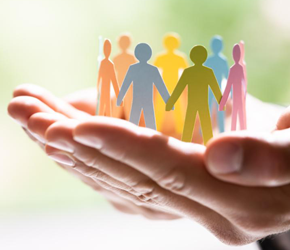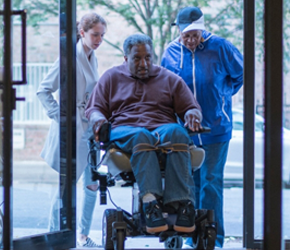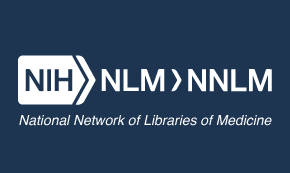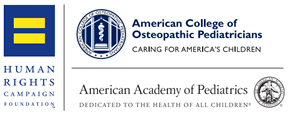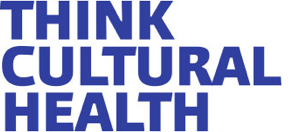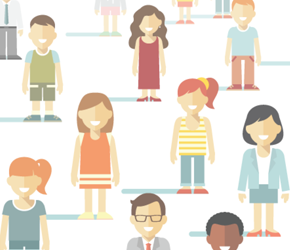Awareness and Lung Health in Diverse Communities
“To advance the American Lung Association’s mission to save lives by improving the lung health and preventing lung disease while fostering, diversity, equity and inclusion our practices, programs, and processes……….”
The Diversity, Equity & Inclusion Council’s vision is to embrace diversity, equity and inclusion within the American Lung Association and the communities we serve.
Behavioral health integration (BHI) Overcoming Obstacles webinar series.
Presented by the Behavioral Health Integration (BHI) Collaborative, this BHI webinar series will enable physicians to sustain a collaborative, integrated, whole-person, and equitable approach to physical and behavioral health care in their practices during the COVID-19 pandemic and beyond.
The resource(s) and entities listed are not officially affiliated with nor do their listing indicate any type of endorsement or an official partnership with any owner of this website.
Behavioral Health Services for American Indians and Alaska Natives
Highlights the importance of providers’ cultural awareness, cultural competence, and culture-specific knowledge. Provides behavioral health professionals with practical guidance.
Bridging Gaps to Build Healthy Communities
Opportunities to better address social determinants to improve health
CDC COVID-19 and Health Equity
To stop the spread of COVID-19 and move toward greater health equity, we must work together to ensure resources are available to maintain and manage physical and mental health.
CDC Demographic Trends of COVID-19
Demographic trends of COVID-19 cases and deaths in the US reported to CDC
Clinical Vignettes
Clinical vignettes highlighting various aspects of the health of LGBT and gender diverse populations to analyze clinician-patient communication strategies.
Association of American Medical Colleges (AAMC) Diversity and Inclusion Medical Education - 2022
Disparities in Oral Health
An overview of disparities related to oral health. The nation’s oral health has greatly improved since the 1960s, but not all Americans have equal access to these improvements.1 Some racial/ethnic and socioeconomic groups have worse oral health2 as a result of the social determinants of health—conditions in the places where people are born, live, learn, work, and play.
Center for Disease Control and Prevention (CDC) – February 5, 2021
Few Studies Assess Social Determinants of Health Intervention by Race
“Over the last decade, achieving health equity has been heralded as a key priority for health care delivery organizations,” the researchers wrote in JAMA Network Open. “Health equity is achieved when all individuals have the opportunity to achieve their full health potential, and no one is prevented from doing so. Achieving health equity requires addressing root causes of health inequities, including inequities in social and structural drivers (determinants) of health.”
The researchers said scientists need a better understanding of the importance and impact of race on social determinants of health interventions.
Health Equity for People with Disabilities
The Division of Human Development and Disability (DHDD) works to promote health and reduce health inequities for people with disabilities of all ages, so they can participate fully in all aspects of their communities throughout their lives and have the opportunity to achieve all they set out to do.
Center for Disease Control and Prevention (CDC) – January 2022
Health Equity Framework for People with Disabilities
This Policy Brief provides rationale for the need of an all-of-government approach to achieve health equity in the United States and our territories for the largest unrecognized minority group in this country, the over 61 million people with disabilities, and sets forth a framework to achieve health equity for all people with disabilities. Disability is a natural part of the human condition, which occurs across all age, gender, racial, ethnic, language and social groups.
National Council on Disability - February 2022
Health Literacy On Demand | NNLM
An important issue impacting health and health care outcomes.
Healthy People 2030 | health.gov
The Health Disparities HealthyPeople.gov data search function is an easy way to access health disparities information related to the Healthy People 2030 objectives for the Leading Health Indicators (LHIs). LHIs are critical health issues that when addressed will help reduce the leading causes of death and preventable illnesses.
The function provides charts and graphs of disparities data at your fingertips. You can browse data by:
- Disparity type—including disability, education, income, location, race and ethnicity, and sex)
- Leading Health Indicator

Industry Collaboration Effort
ICE is a volunteer, multi-disciplinary team of providers, health plans, associations, state and federal agencies and accrediting bodies working collaboratively to improve health care regulatory compliance through education of the public.
ICE Toolkit

Intellectual and Developmental Disability and Health Disparities
Collection of Articles published by American Association on Intellectual and Developmental Disabilities (AAIDD)
American Association on Intellectual and Developmental Disabilities (AAIDD) - 2022
Johns Hopkins Coronavirus Resource Center
See the U.S. states that have released COVID-19 data by race, broken down into three critical categories: confirmed cases, deaths, and testing.
National Healthcare Quality and Disparities Report
Assesses the performance of our healthcare system and identifies areas of strengths and weaknesses, as well as disparities, for access to healthcare and quality of healthcare.
AHRQ Health Literacy Universal Precautions Toolkit, 2nd Edition

National LGBTQIA+ Health Education Center
The National LGBTQIA+ Health Education Center provides educational programs, resources, and consultation to health care organizations with the goal of optimizing quality, cost-effective health care for lesbian, gay, bisexual, and transgender (LGBTQIA+) people.

Play Video
LGBTQIA+ Diversity Education National LGBT Health Education Center
Play Video
LGBTQIA+ Care: Delivering Trust & Belonging with Every Interaction Webinar
Ten Strategies for Creating Inclusive Health Care Environments for LGBTQIA+ People
National LGBTQIA+ Health Education Center, Fenway Institution - April 2021

The Office of Minority Health
The Office of Minority Health is dedicated to improving the health of racial and ethnic minority populations through the development of health policies and programs that will help eliminate health disparities.

PrEP Action Kit
The PrEP Action Kit includes clinical resources to help providers incorporate PrEP into their practices. Including helpful resources such as tips on taking a comprehensive sexual history, frequently asked questions about PrEP and a pocket card about PrEP prescribing and monitoring, this action kit is an essential resource for all providers treating LGBT patients or patients at risk of HIV infection.
Project Implicit
Project Implicit is a non-profit organization and international collaboration between researchers who are interested in implicit social cognition - thoughts and feelings outside of conscious awareness and control. The goal of the organization is to educate the public about hidden biases and to provide a “virtual laboratory” for collecting data on the Internet.
Social Attitudes: Find out your implicit associations about race, gender, sexual orientation, and other topics!
Mental Health: Find out your implicit associations about self-esteem, anxiety, alcohol, and other topics!
Religious Understanding as Cultural Competence
Information to improve religious competence among clinicians to support person-centered care.
Supporting and Caring for Transgender Children
This guideline is designed for pediatricians and mental health professionals working with transgender and gender diverse youth; provides specific information for managing social and medical transitions with patients and families.
Think Cultural Health
Advancing Health Equity at Every Point of Contact
Tobacco-Related Disparities | CDC
Access information on tobacco use, risks, and health outcomes by race and ethnicity, socioeconomic status, and geographic region. Patient-facing educational material is also available.
Various topics on race and health
Harvard website with various entries on race, health and inequities.
What’s your sexual orientation?
To whom are you attracted? Both cisgender and transgender people can be attracted either romantically or sexually to men, women, transgender or cisgender people, or any combination. Once again, it’s a continuum.
